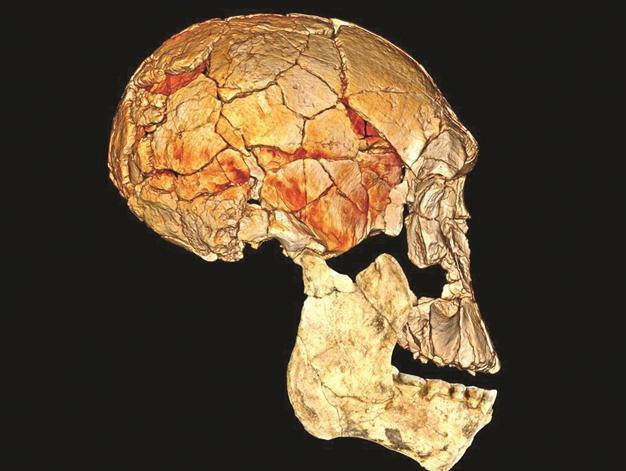Early man was not alone, a study says
PARIS - Agence France-Presse

Newly unearthed 40-year-old fossil findings prove that ancestors of human beings shared the planet with at least two related species, a new study suggests. AFP photo
Modern man’s forerunners shared the planet with at least two related species nearly two million years ago, scientists said, pointing to newly-unearthed pieces in a 40-year-old fossil puzzle.Findings published in the journal Nature touch on the odyssey of human ancestor, the upright-walking early human known as Homo erectus. H. erectus and a tool-making relative called Homo habilis were probably contemporaries of an even older species called Homo rudolfensis, the scientists contend. “Human evolution is clearly not the straight line that it once was” thought to be, study co-author Fred Spoor said in a teleconference.
Spoor and a team dug up teeth, face and jaw fragments from sediment dated to the Pleistocene period at a location east of Lake Turkana in northern Kenya between 2007 and 2009.
The prize culminated an agonising search for clues about a flat-faced, large-brained hominid whose skull had been found nearby in 1972.
Known as KNM-ER 1470, or 1470 for short, the hominid had lived around two million years ago. But that was the only thing that was clear, for paleontologists fought bitterly over its identity.
Until 2007, such evidence remained elusive, for the skull lacked a lower jawbone, a vital piece of evidence. “Then our luck magically changed, and within three years we found three fossils which we believe are attributable to the same species as 1470,” said Meave Leakey, who had discovered 1470 with her husband Richard Leakey.
Their daughter Louise was part of the team that found the new fossils.
New fragments of two individuals
The new fragments of two individuals that resemble 1470 are between 1.78 million and 1.95 million years old and were found within a 10-kilometer radius of the 1470 site.
“One of the big problems with the skull 1470 was that, yes it is remarkably complete with the whole brain case there and a good part of the face, but it doesn’t have teeth and it doesn’t have a lower jaw with it,” said Spoor. “This (new) little skull had teeth and in fact the teeth are very well preserved.” The new fossils were gently removed from sandstone using a dental drill before being scanned inside and out at a hospital in the Kenyan capital Nairobi. The scans were used in a virtual reconstruction of the entire lower jaw, which proved a good fit with the upper jaw of 1470.
The result: a hominid that most likely is of an even older lineage of homo called H. rudolfensis. If so, it deals a blow to a rival theory that 1470 was a misshapen habilis.
“Statistically speaking, the chances that this is really a separate species have now greatly improved,” said Spoor.
















